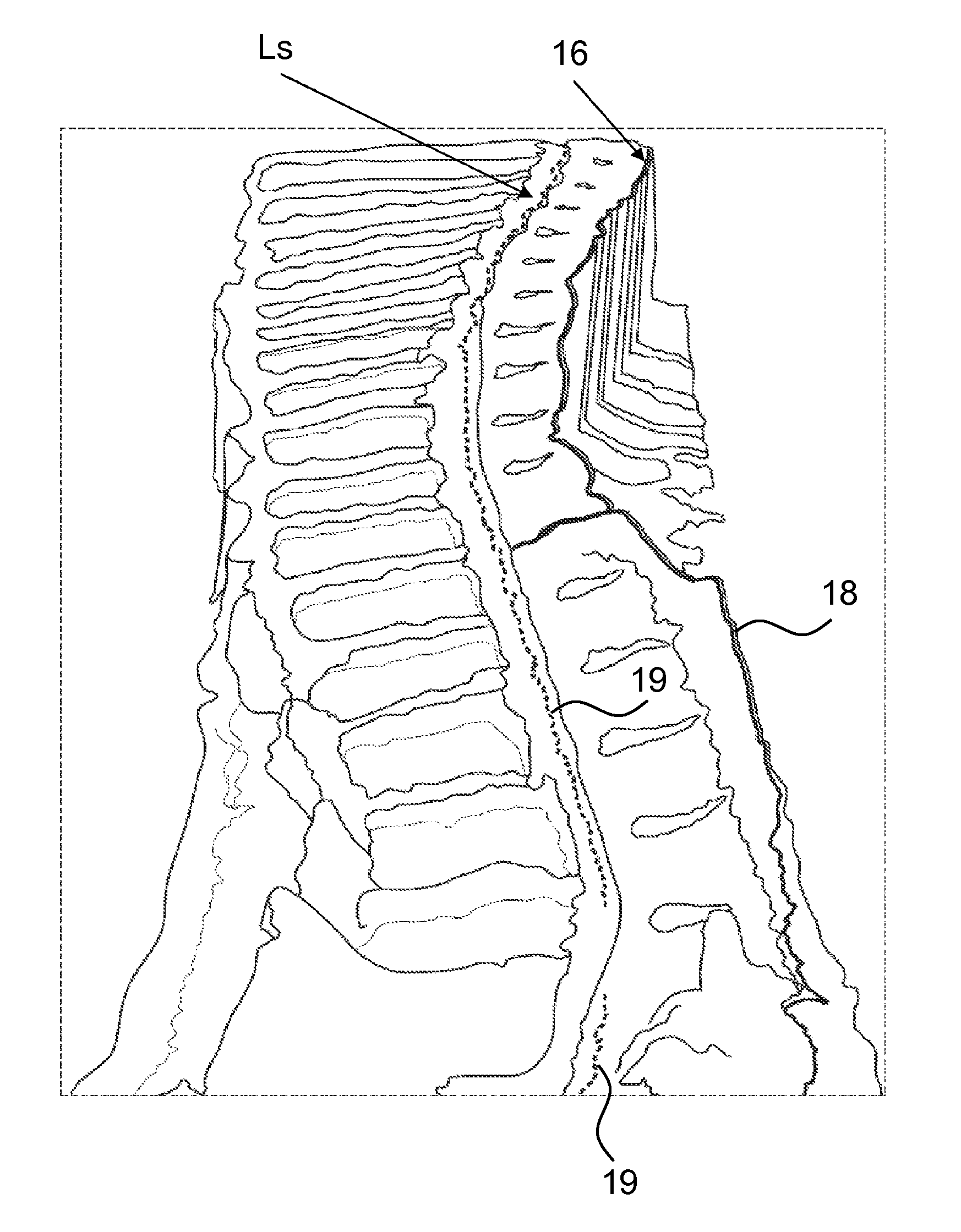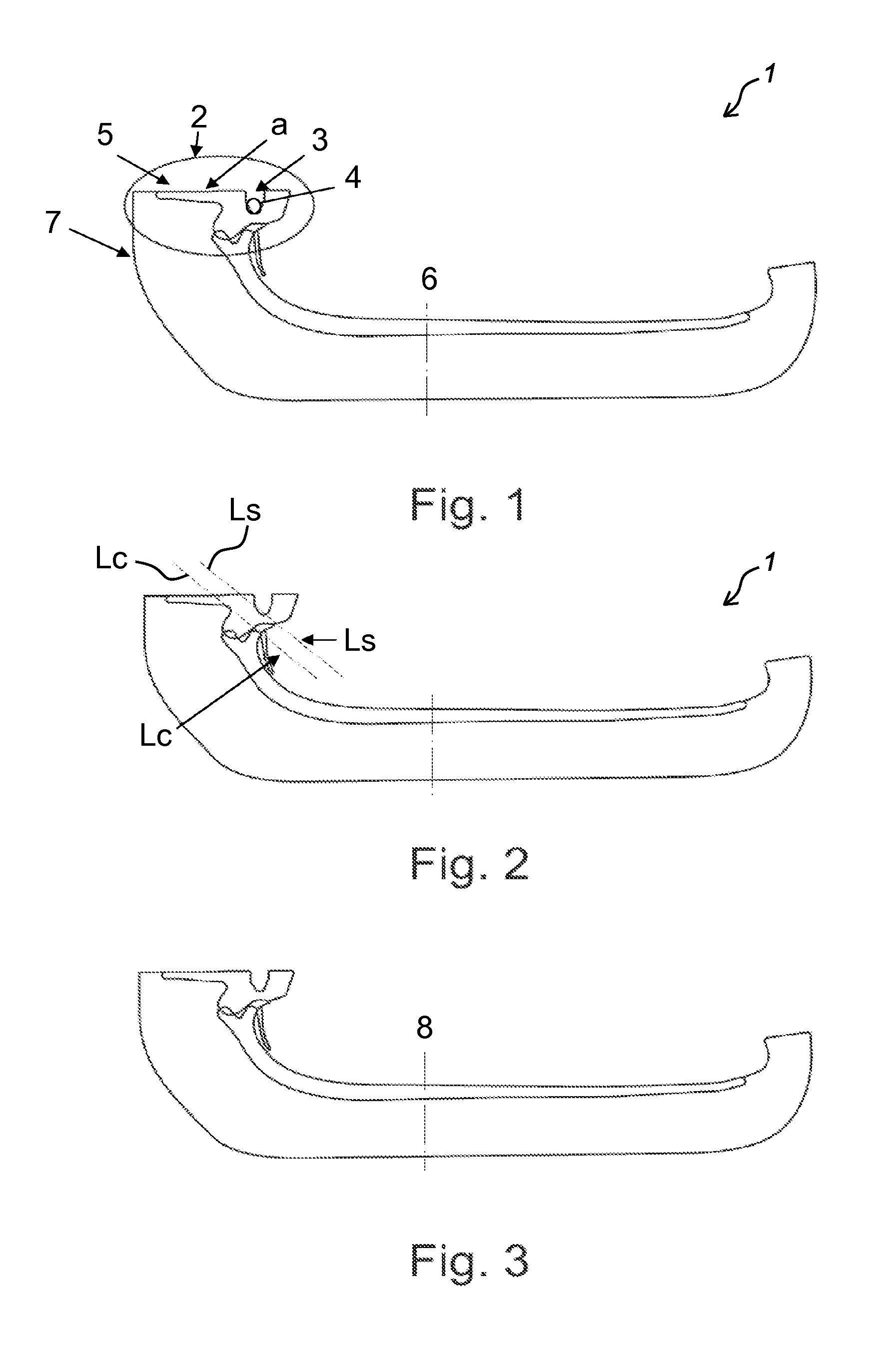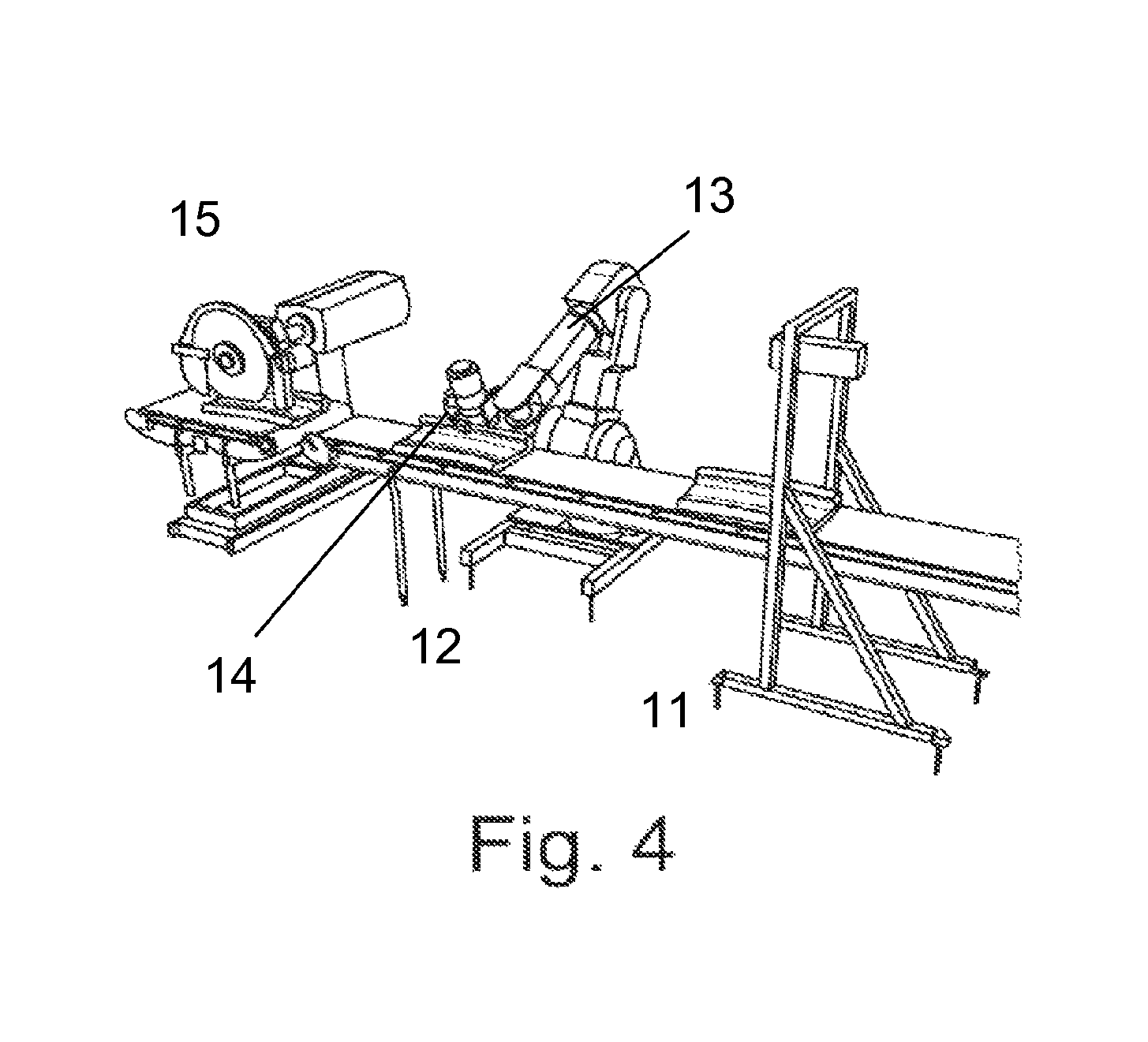Separation of the spinal column from a carcass middle part
a technology of spinal cord and middle part, which is applied in the field of separation of the spinal cord from the middle of the carcass, can solve the problems of unintentional devices, rib-top cuts or spinal cord cuts known from the prior art, and the exact dimensions of the middle are not always the same,
- Summary
- Abstract
- Description
- Claims
- Application Information
AI Technical Summary
Benefits of technology
Problems solved by technology
Method used
Image
Examples
Embodiment Construction
[0007]It may be an object of embodiments of the present invention to provide a method and a system for the automated separation of the spinal column from a carcass middle / which minimizes the amounts of waste by providing a precise positioning of the cutting device. It may be another object of embodiments of the invention to provide a method and system / which is less complex and more affordable that the prior art systems. It may be another object of embodiments of the invention to provide a system / which eliminates the need for separate machinery for the cutting of left and right half-carcasses.
[0008]In a first aspect / the invention provides a method of separating the spinal column from a carcass middle part / comprising the steps of:[0009]determining a cutting path (1c) for a cutting device for the separation of the spinal column from the carcass middle;[0010]separating the spinal column from the carcass middle part by causing a relative movement between the middle and the cutting device...
PUM
 Login to View More
Login to View More Abstract
Description
Claims
Application Information
 Login to View More
Login to View More - R&D
- Intellectual Property
- Life Sciences
- Materials
- Tech Scout
- Unparalleled Data Quality
- Higher Quality Content
- 60% Fewer Hallucinations
Browse by: Latest US Patents, China's latest patents, Technical Efficacy Thesaurus, Application Domain, Technology Topic, Popular Technical Reports.
© 2025 PatSnap. All rights reserved.Legal|Privacy policy|Modern Slavery Act Transparency Statement|Sitemap|About US| Contact US: help@patsnap.com



